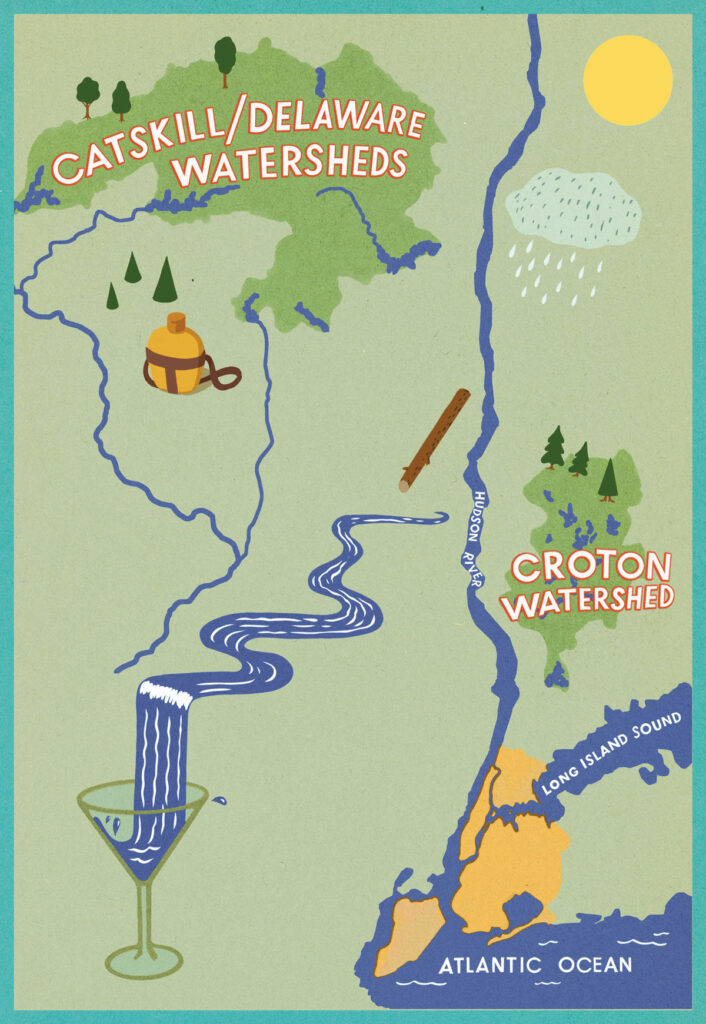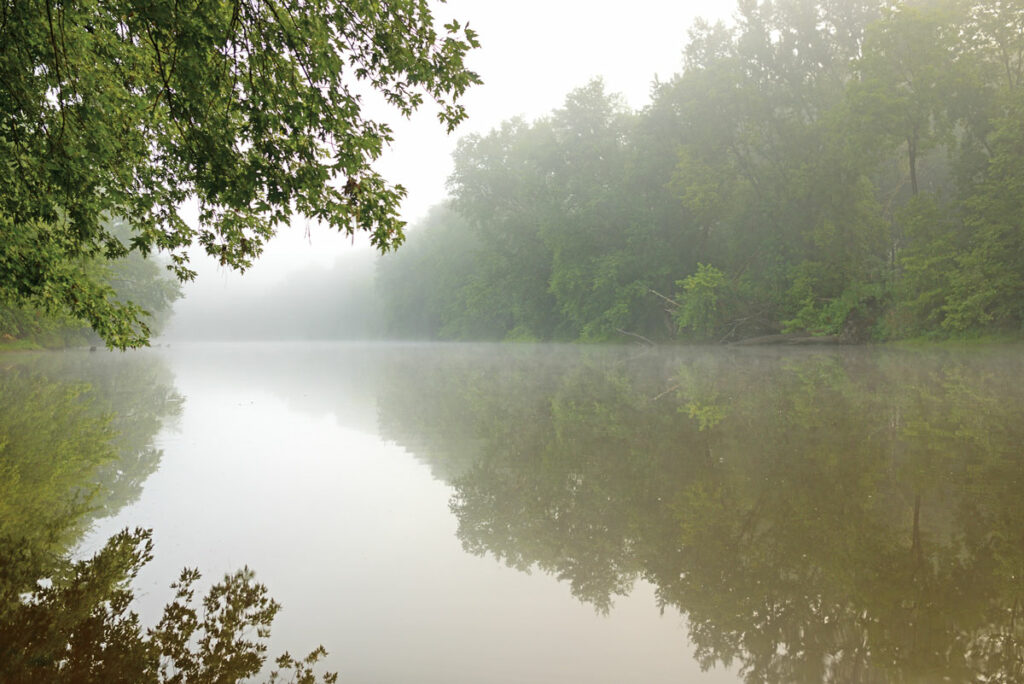New York’s water, supplied by the finest reservoirs in the world, has never been more essential.
Without water there is no life, which perhaps helps to explain why New York is among the most vibrant places on earth: We have abundant waterways of all types imaginable, from ocean to Great Lakes to our reservoirs.
FEATURED IMAGE (TOP)
A view of the New Croton Reservoir, part of three systems that cover nearly 2,000 square miles, and hold a combined storage capacity of 550 billion gallons.
There are many ways to think of our water: As our primary drink (and as an ingredient in other, non-essential drinks!), as one of the three essences—along with sun and soil—needed for our agriculture to thrive, as a source for recreation and cleanliness, and, for its beauty, as an object of our gaze. No one who has seen the harbor of New York City, the Hudson fjords, the reservoirs that slake our cities’ thirsts, and the incomparable Great Lakes can fail to have been impressed at the variety and sublime nature of our waters.
These waters need protection. As recently as the middle of the last century, they were thought of as nature’s cleansers, places where toxins and trash could be dumped without harm. The environmental movement sounded that alarm, and now, federal, state, and local laws, aided by dozens of hardworking nonprofits, protect streams, rivers, lakes, and watersheds. This essential work must continue and even accelerate if we want our descendants to be able to appreciate the glorious waters of New York as much as we do.

Mark Bittman is the author of 20 acclaimed books, including the How to Cook Everything series, and his most recent cookbook, How to Cook Everything Kids. He serves on the Leadership Council of Riverkeeper, a constant guardian of New York’s Hudson River, its tributaries and watershed.




